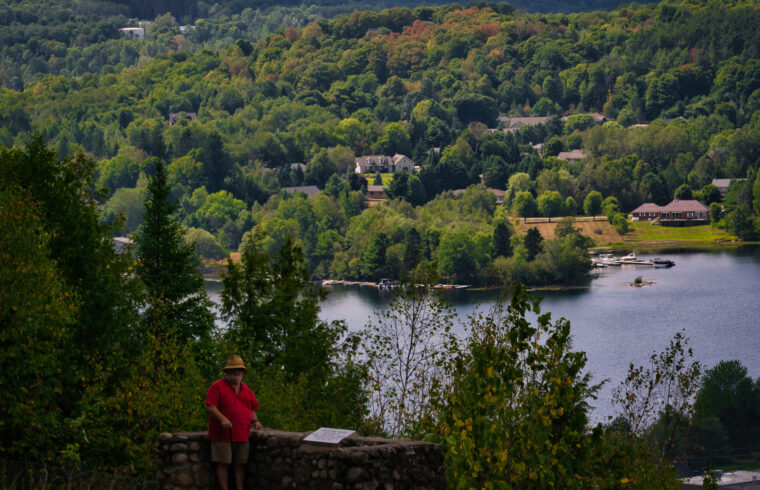By Adam Frisk
Hints of fall have started to decorate the county with autumn colours appearing on the skyline as drought-stricken trees begin to change and drop some leaves.
The hot and dry summer is paving the way for an “early” fall as some trees have started to pepper the county with brown and yellow colours.
“So what’s happening is that trees are programmed this way,” Shaun Watmough, professor at Trent University’s School of the Environment, said in an interview. “When trees still have leaves, these tiny pores called stomata are open and allow carbon dioxide to go into the leaf but at the same time they lose water.
“So when you have drought conditions the trees can’t afford that water loss, they’ll die. So it’s a way of preserving the water loss by early senescence,” the professor said.
Premature leaf drop, or early senescence, can be triggered by various factors including excessive rainfall, or in the case of much of eastern Ontario, drought.
“So the reason the leaves are changing colour is because they are reabsorbing some of the pigments. So chlorophyll, for example, which gives trees their green colour, gets reabsorbed but some of the other pigments, the trees can’t reabsorb them quite as easily so that’s why we get the varying colours.”
The professor said the colours are species specific, noting that birch trees usually turn yellow and the maples can turn bright red. And once the tree begins to turn colour, there’s no going back regardless of rainfall.
“Once they start it basically sets off signals that go on within the plant and they have already absorbed the chlorophyll, they’re already on their way.
“Fall colours have come early,” Watmough said.
Watmough said that because it’s been so dry the change in leaves might be about two weeks earlier in the region but the changeover is really dependent on the local conditions.
Matt Mayr, ISA certified arborist with DaveyTree Expert, said given the conditions the trees have endured in the county, there’s no question that many trees have started the fall process.
“Plants prioritize water for essential functions, so chlorophyll production and photosynthesis begins to decrease,” the arborist said. “So what we can get sometimes is early leaf dying and dull fall colour, so like the yellowing or the brown foliage, wilting and premature leaf drop.
“So it’s not out of the question that the leaves start to change colour early because they’re running out of chlorophyll because the tree is using the water for other functions,” Mayr explained.
Mayr suggested that if the hot and dry weather drags on, it could make for a shorter fall season.
“The best thing that could happen is a good dose of rain, so heavy rain over the next little while,” he said. “If you don’t get that up there, it’s very possible that it could be a shorter season.”
Fall tourism in the Haliburton Highlands plays an important role for the economy and local businesses that are looking to extend beyond the typical busy months.
“Fall is becoming a really popular and busy time up in the Haliburton Highlands. We would normally see a drop off in visitation after Labour Day and then a very significant drop off after Thanksgiving,” Angelica Ingram, manager of tourism for the County of Haliburton, said. “Now we’ve noticed a shift in that, even pre-COVID, we’ve seen a shift in people lengthening the tourism season up here.
“We’re seeing people stay right up until November which is wonderful,” Ingram said.
The milder and bug-free days make for a good time for daytrippers to experience the highlands, Ingram said, but it seems to be the fall colours that really draw people here.
“It’s becoming a really nice time of year for the tourism sector up here and for the community because there’s lots to see and do and more and more people are coming during that time,” she said.
The fall months also help benefit the businesses that rely on the summer to sustain themselves for the off season, providing a few extra weeks to potentially bring in more income.
“It kind of comes back to sustainable tourism. For a lot of these businesses historically would have to rely on a really good and busy summer to make a lot of their money to sustain them year around,” Ingram said. “So having fall as a reliable season really helps propel them through the winter season.”





 The view from Skyline Park shows drought-stricken trees beginning to change colour on Aug. 14. /ADAM FRISK staff
The view from Skyline Park shows drought-stricken trees beginning to change colour on Aug. 14. /ADAM FRISK staff 








